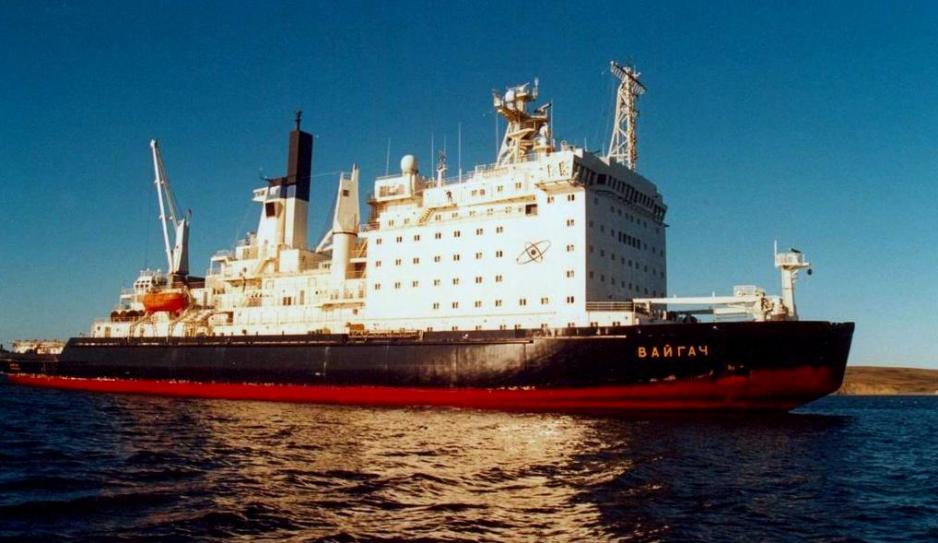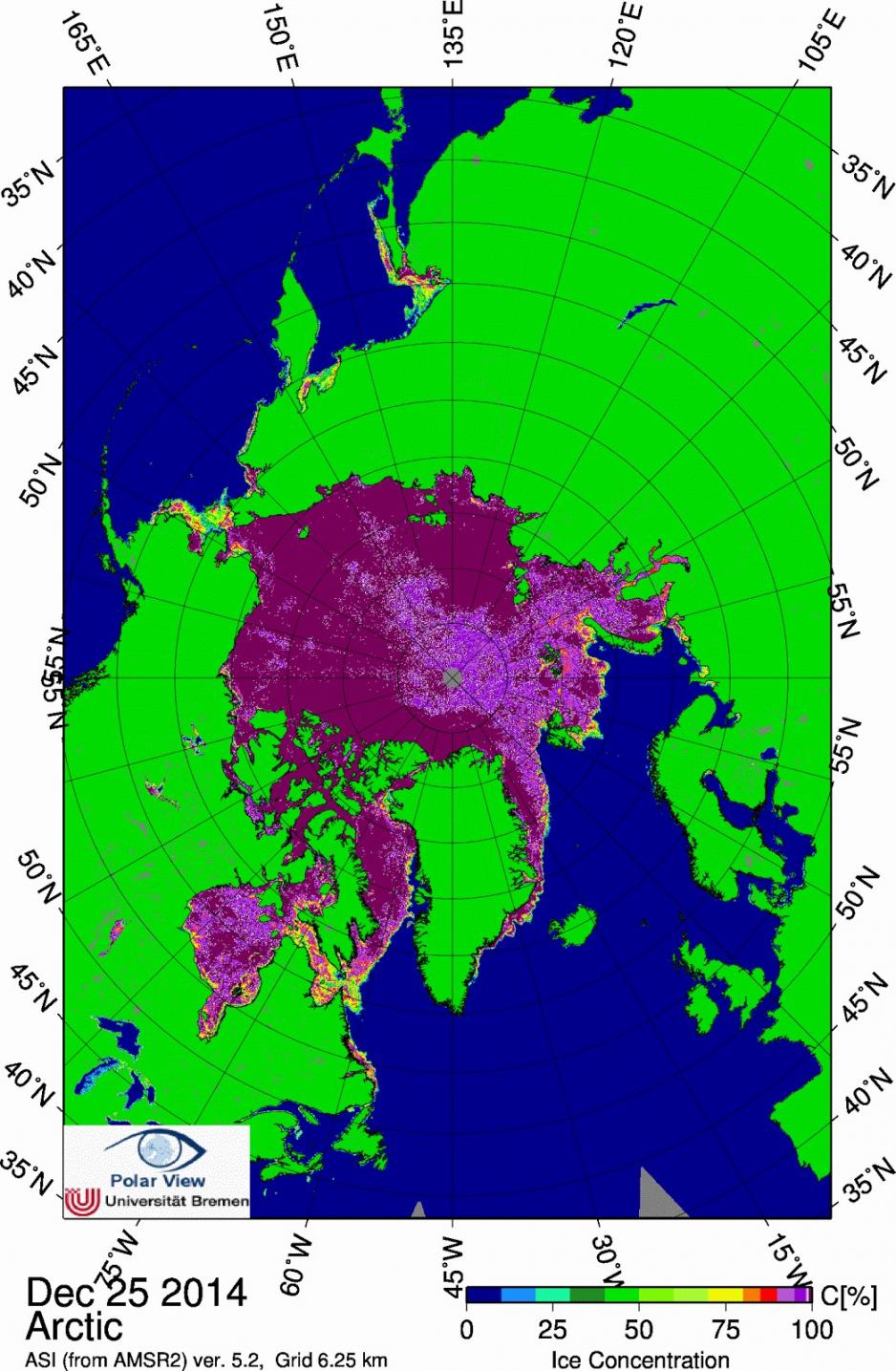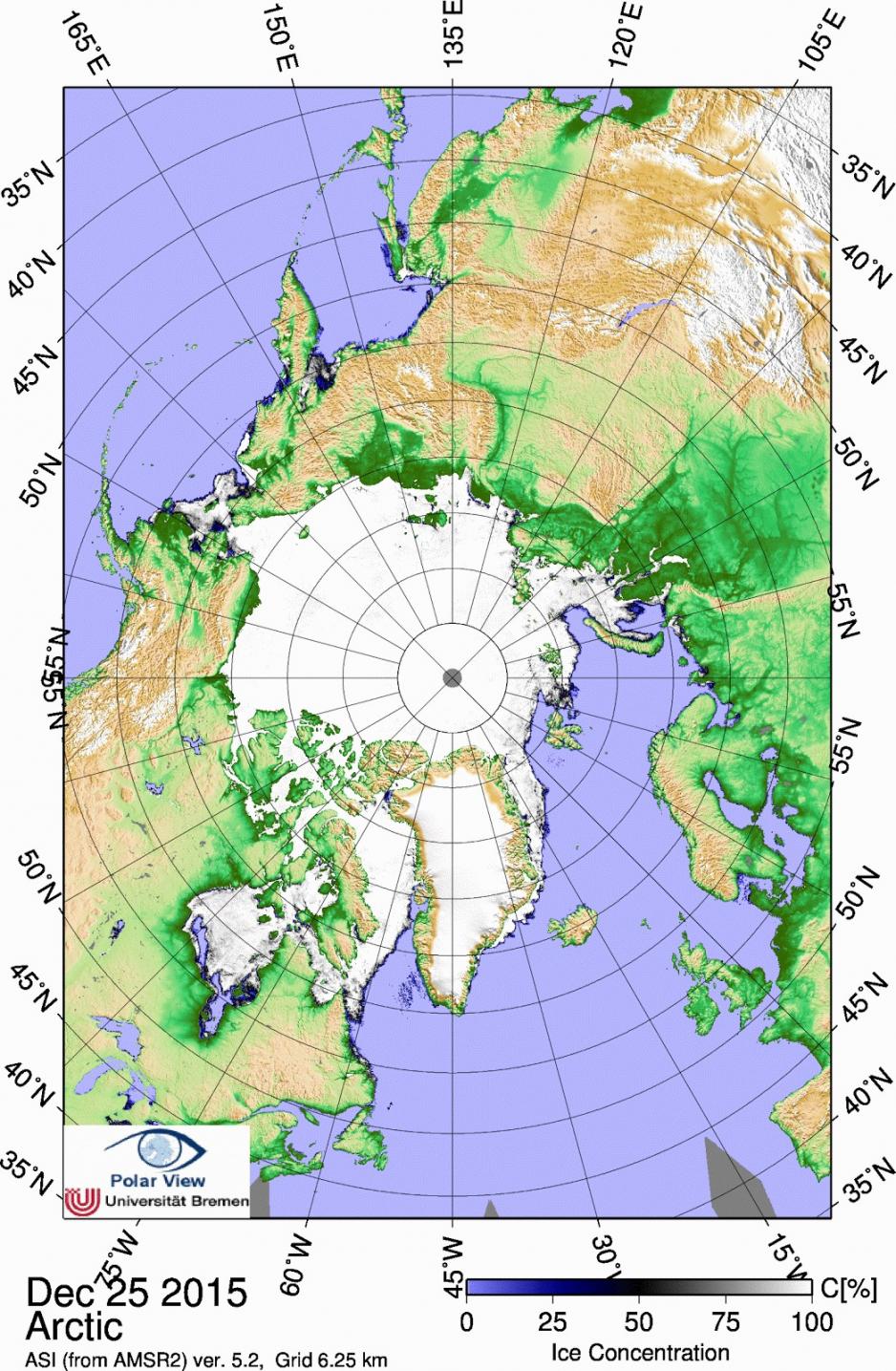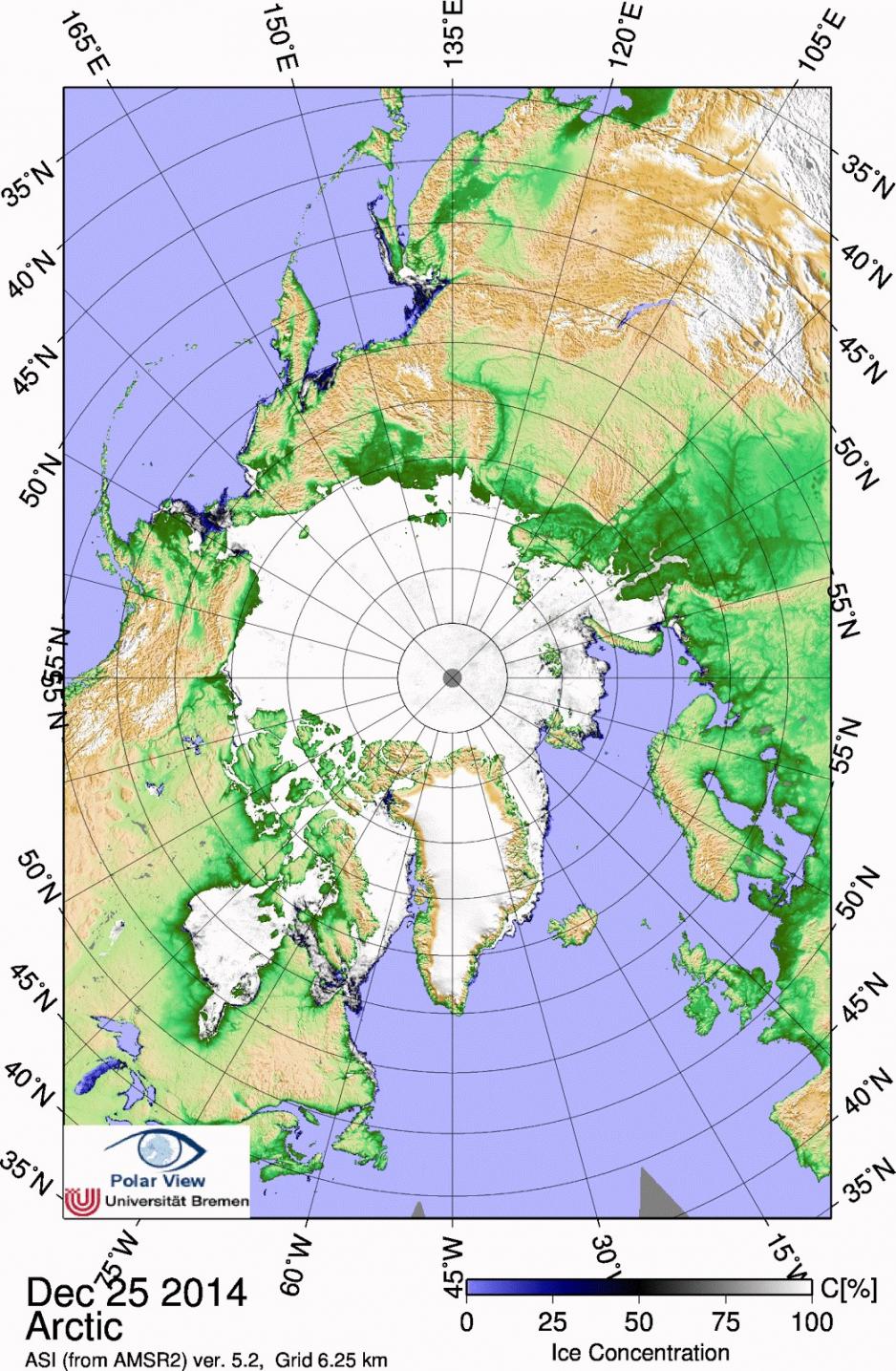Quick winter transit of Northern Sea Route by Russian icebreaker

As the year 2015 came to a close the Russian nuclear icebreaker Vaygach, among the largest polar-class icebreakers in operation, completed a late-season transit of the Northern Sea Route (NSR) in 7.7 days - a new speed record according to local Russian media and the vessel’s captain. Despite claims of a record-breaking transit, faster transits were made in previous years by Norwegian and Chinese vessels and another Russian vessel.
Vaygach departed from the area around Cape Dezhnevon on the Russian side of the Bering Strait on December 17 and arrived at the White Island in the White Sea on December 25, having traversed around 2200 nautical miles of Arctic waters along the NSR. The ship began its journey after it completed a three-week assignment escorting and assisting in tanker operations of Svyatoy Pyotr providing fuels to ports along the Russian coastline on behalf of the Russian Defense Ministry starting November 25. During its late fall operation Vaygach covered more than 16,000 nautical miles along the NSR, of which, 14,500 miles were ice-covered. In total it assisted ten vessels during the months of October and November.
On November 12 the icebreaker was involved in a collision between two 11,000 ton tankers during a escort convoy 70 nautical miles southwest off the New Siberian Islands in the Laptev Sea. The collision occurred when the Svyatoy Petr encountered problems with its engine and subsequently lost propulsion. Due to limited following distance in the convoy the vessel was unable to stop and collided with the Svyatoy Pavel. Both vessels were operated by Russia’s Morskoy Standart. Svyatoy Petr sustained damage along 20 meters on the portside and Svyatoy Pavel suffered a five-meter-long crack above its waterline on the starboard bow. While Svyatoy Petr was able to leave the accident site under its own power, Pavel was towed by Vaygach to Temp Bay.
While the late December transit is noteworthy for the time of year and its significant average speed, it must be noted that other vessels have traversed the NSR at similar or higher speeds and in less time during previous years. A closer look at the transit statistics from 2011-2014 shows at least five vessels during seven voyages transited the full length of the NSR at a quicker pace and attained a higher average speed.
In 2012 the Nordic Odyssey, Nordic Orion and Nordic Barents all traversed the NSR from Cape Zhelaniya to Cape Dezhnev or vice versa in 7.5 days or less at average speeds of 13.3 knots or above. The following year in 2013 the Yong Sheng, a multi-purpose vessels operated by COSCO, traveled the NSR in westbound direction in 7.4 days at a speed of 14.1 knots. In 2014 the vessel SCF Amur traveled the entire length of the NSR three times, each time in 7.5 days.
While navigating Arctic waters, especially during 24 hours of darkness above the Arctic Circle and during harsh winter conditions is a substantial feat, one would expect a vessel of Vaygach’s capabilities to operate confidently in still-forming first-year ice. Its transit was assisted by favorable ice conditions along most parts of the NSR allowing for high average speed.
A closer look at ice conditions along the NSR in mid- to late-December shows less than 100 percent ice coverage for much of the route along the Russian coastline, especially in the Laptev Sea and around the New Siberian Islands. This compares favorably to conditions during the same time frame in 2014 where 100 percent coverage existed along most of the route.


Illustration showing sea ice remote sensing in December 2015. (Source: Spreen, G., L. Kaleschke, and G.Heygster)

It should also be noted that a successful early-winter transit of a highly capable polar-class nuclear icebreaker provides little indication in terms of the feasibility of late-season or early winter transits for less ice capable vessels.
In light of declining transit traffic in 2014 and 2015 even during the less challenging summer months, it remains unlikely that winter transits will become a common occurrence during the coming years.
